The Sforzesco Castle is one of Milan’s most important landmarks. It long served as a symbol of power for local and foreign rulers. At the start of the early twentieth century, the castle was saved from demolition and now houses a number of civic museums.
History
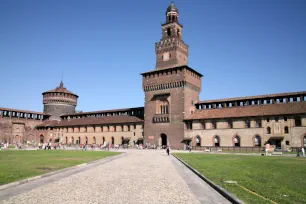
In 1358 Galeazzo Il Visconti, the first duke of Milan, ordered the construction of a fortress. Completed in 1368, it had a basic layout with four walls, each one hundred eighty meters long (591 ft.) and a square tower at each corner. His successors Gian Galeazzo and Filippo Maria expanded the fortress and converted it into a palatial residence. After Filippo Maria Visconti died without leaving an heir in 1447, the Milanese people proclaimed the Ambrosian Republic and razed the castle – seen as a symbol of the Visconti – to the ground.
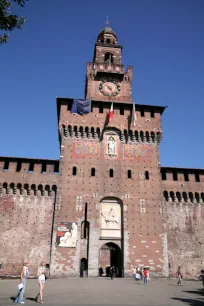
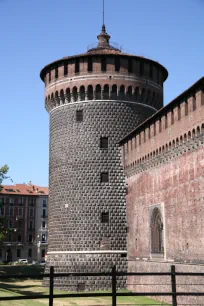
The fledgling republic, which was at war with Venice, turned to the renowned military leader Francesco Sforza for help. Just three years later, Sforza grabbed power and declared himself duke of Milan. He quickly rebuilt the castle, this time with a seventy-meter-tall (230 ft) central tower – the Torre del Filarete, flanked with large round towers. His successors further improved and embellished the structure.
In its heyday during the reign of Ludovico Sforza – nicknamed ‘Il Moro’, the castle was transformed into a magnificent Renaissance residence. The duke turned to the great artists of his time, including Donato Bramante and Leonardo da Vinci, to decorate the castle.
During the following centuries, when Milan was under foreign rule, the castle was neglected and mostly used as a barracks. The Torre del Filarete, which was used as a munition storage, exploded in 1521. During the latter part of the sixteenth century, the Spanish added star-shaped fortifications around the castle, later partially demolished by Napoleon’s troops.
After the Italian unification in 1861 the castle was in such a bad shape that the city considered demolishing the tattered structure. Architect Luca Beltrami however saved the castle from the wrecking ball by suggesting to convert it into a public building with room for several cultural institutions. In 1893 Beltrami started renovating the monumental castle. He rebuilt the damaged towers, recreated the moat and removed structures that were added during foreign rule. He even rebuilt the Torre del Filarete after the original plans.
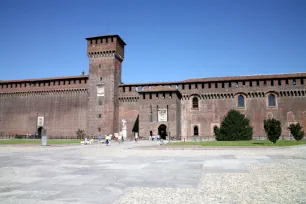
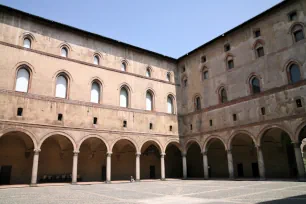
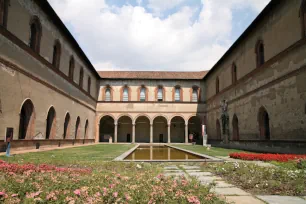
In 1900 the renovated Sforzesco Castle opened to the public. Work would continue until 1905, when the reconstruction of the Torre del Filarete was completed.
The Castle
The present castle, with a square plan laid out around three inner courtyards, is dominated by its many towers. There are four imposing towers at each corner: two round towers at the main facade facing the city and two square towers at the other end. The thirty-one-meter (102ft) tall, round towers are known as the Torre di Santi Spirito and the Torre del Carmine. At the rear are two more conventional towers, the Torre Castellana and Torre Falconiera. The main entrance to the Sforzesco Castle leads through the castle’s tallest tower – the Torre del Filarete – to the Piazza d’Armi, an expansive inner courtyard. Another tower, the Torre di Bona di Savoia, is visible from the courtyard.
Behind this tower lies the heart of the castle, with the palatial residences of the Sforza dukes enclosing two smaller courtyards: the Cortile della Rocchetta to the left and the Corte Ducale to the right. The Rocchetta was the castle’s stronghold and the last refuge in case of a siege. During the reign of Ludovico Il Moro, the residences around the courtyard were magnificently decorated with frescoes. The three arcades bordering the courtyard were designed by three different architects. The Torre Castellana, the tower at the western corner of the Rocchetta, was at the time used as a treasury. The Corte Ducale (Ducal Courtyard) has an elegant Renaissance design, with a beautiful loggia, the Loggetta di Galeazzo Maria. Several rooms around the Corte Ducale are decorated with magnificent frescoes from the fifteenth century.
The most famous is the fresco in the Sala delle Asse in the Falconiera tower, created by none other than Leonardo da Vinci.
Museums
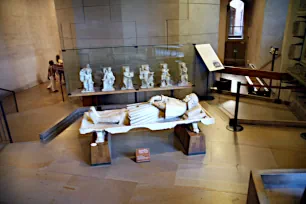
Castello Sforzesco is home to a number of museums, the Musei Civici. They are spread out over several floors around the Rocchetta and Ducal courtyard.
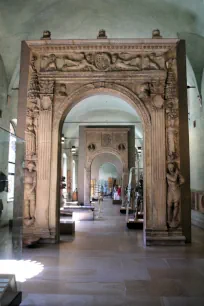
The collection of the archaeological museum, which contains prehistoric and Egyptian artifacts, can be viewed in the basement floors around the Ducal Courtyard. The ground floor exhibits a wide-ranging collection of ancient art. Highlights include a fourth century sarcophagus, the fourteenth century Mausoleum of Bernabò Visconti and the Pièta Rondanini, an unfinished sculpture by Michelangelo. The first floor contains the furniture collection and the art gallery, with mostly Italian paintings, including Andrea Mantegna’s Trivulzio Madonna.
The first and second floor of the Rocchetta house the museum of musical instruments and the collection of applied arts. On the first floor you’ll find historic musical instruments such as a sixteenth century Venetian harpsichord, a glass harmonica and a Flemish double virginal. The collection of applied arts includes many objects in gold, silver, glass, porcelain, ivory and wrought iron from the Middle Ages up to the nineteenth century. Also noteworthy are the Trivulzio tapestries, woven after a design by Bramantino.

